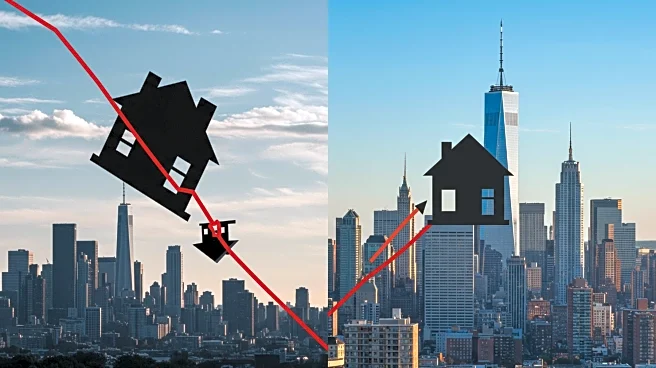What's Happening?
In South Florida, home sellers are increasingly removing their properties from the market due to difficulties in finding buyers willing to meet their asking prices. The tricounty region, which includes Miami-Dade, Broward, and Palm Beach counties, has seen a significant rate of homes being delisted as they remain unsold for longer periods. According to a Realtor.com analysis, the Miami metropolitan area had the highest ratio of homes taken off the market, with 59 homes delisted for every 100 new listings. This trend reflects broader real estate challenges across the U.S., where increased inventory and fewer buyers are leading to longer selling times. The median listing prices in South Florida have also declined, dropping from $535,000 in July 2024 to $509,950 recently.
Why It's Important?
The delisting trend in South Florida highlights significant shifts in the real estate market, affecting both sellers and buyers. Sellers are holding onto properties due to high equity and unwillingness to lower prices, which could lead to a more balanced market. This situation impacts potential buyers who may find fewer options and higher prices. The increased inventory and slower sales are indicative of broader economic factors, including fewer people moving to Florida post-pandemic and rising costs prompting sales of secondary homes. These dynamics could influence real estate strategies and economic conditions in the region, affecting local businesses and housing policies.
What's Next?
As the market adjusts, sellers may continue to hold out for better offers, potentially stabilizing prices. Real estate firms and economists will likely monitor these trends to advise clients and adjust strategies. The balance between sellers and buyers will be crucial in determining future market conditions. If delisting continues, it could lead to a more stable pricing environment, benefiting sellers who are not in urgent need to sell. However, buyers may face challenges in finding affordable options, influencing their purchasing decisions and potentially slowing market activity.












